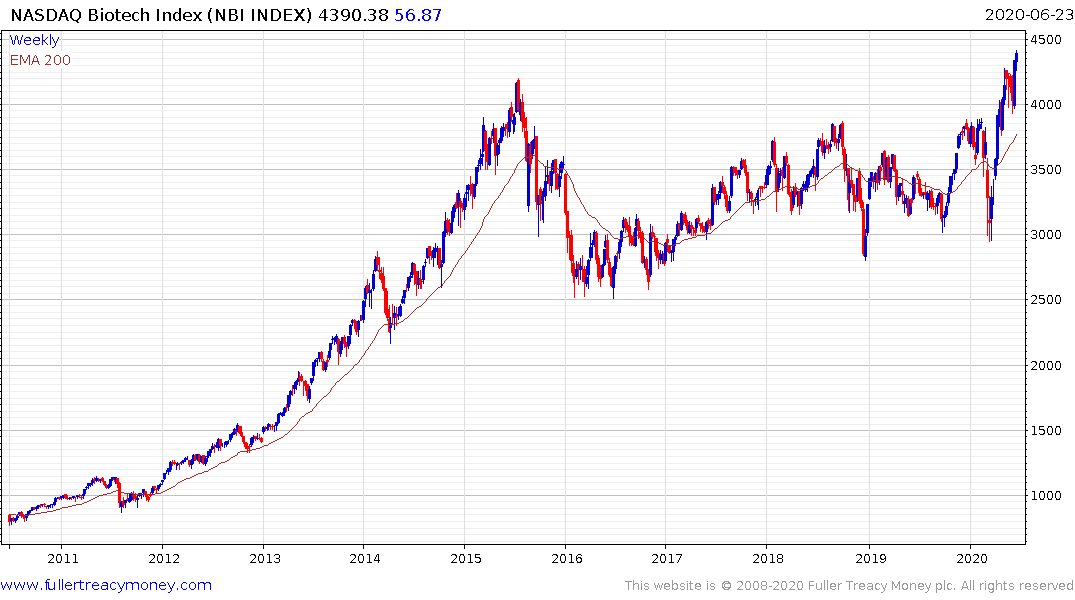The New Weapon in the Covid-19 War
This article by Michael Lewis for Bloomberg may be of interest to subscribers. Here is a section:
Back in 2003, when the original SARS virus started killing people in Hong Kong at a frightening rate, DeRisi sequenced its genome. But the process was too slow and expensive to be of practical use. “It’s 50,000-fold cheaper now than it was for SARS,” he told me. “What cost me $10,000 to do in 2001 now costs a penny.” And so we might now test for the virus in a way that gives us a picture that you can’t get from more conventional random sampling. Explore how the virus works in one neighborhood and you can apply what you learn to others. “Our state government should be doing this,” said DeRisi. “It should be asking: What are our social relationships and which ones lead to the transmission of disease? That’s what you would do in a rational society.”
The world was caught flatfooted with COVID-19 and many countries are still struggling to get a handle on how best to deal with a wholly new pathogen that seemed to spring out of nowhere. The big difference on this occasion is all historical comparisons are likely to be inaccurate because of the leaps in technological innovation that have taken place since the sequencing of the human genome almost twenty years ago.
Contact tracing is possible on a level of accuracy which was previously unimaginable. Of course, we are still debating how best to implement these kinds of measures and how much information really needs to be shared with government but there is no doubt the potential for massive data gathering and utilization is possible.
This is most likely to find commercial utility in the biotechnology sector where low cost genetic sequencing, low cost genetic editing and low cost data analysis are combining to greatly enhance the potential for innovative solutions to previously intransigent problems.
A factor that seems to have skipped over the attention of investors is the pace of innovation in biotechnology is much quicker than Moore’s Law. Healthcare data sets are much larger than what is observable in other fields. Therefore, not only is the sector benefitting from lower sequencing and editing costs but the pace of innovation in big data and artificial intelligence are a significant compliment to what is possible.
The announcement earlier this month that scientists are close to solving the protein folding problem using deep learning is another example of how long-standing challenges to understanding basic biological questions are falling to processing power.

COVID-19 could yet be the catalyst for quicker commercialisation of these technologies. The Nasdaq Biotechnology Index continues to extend the breakout from its five-year range.


